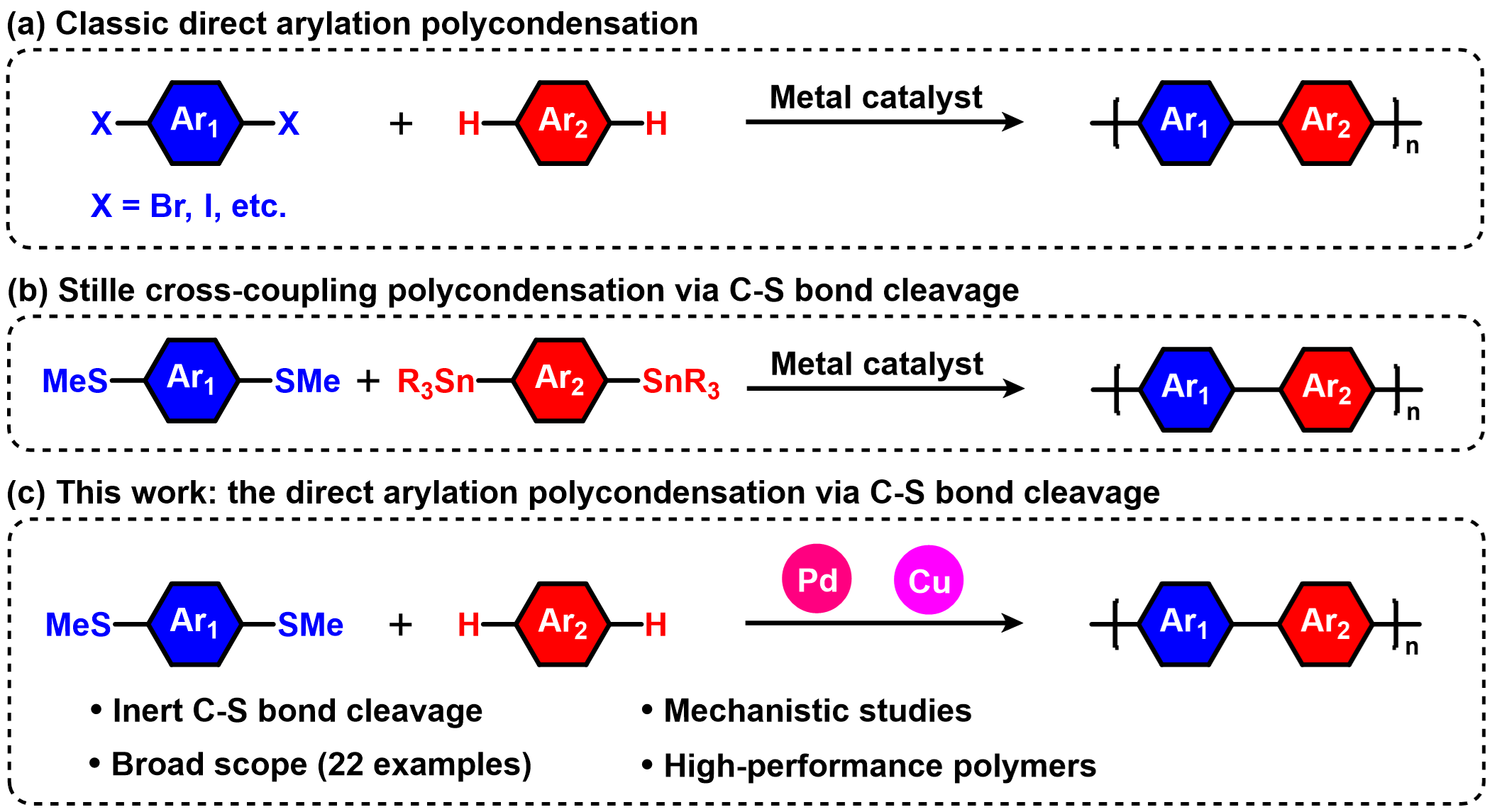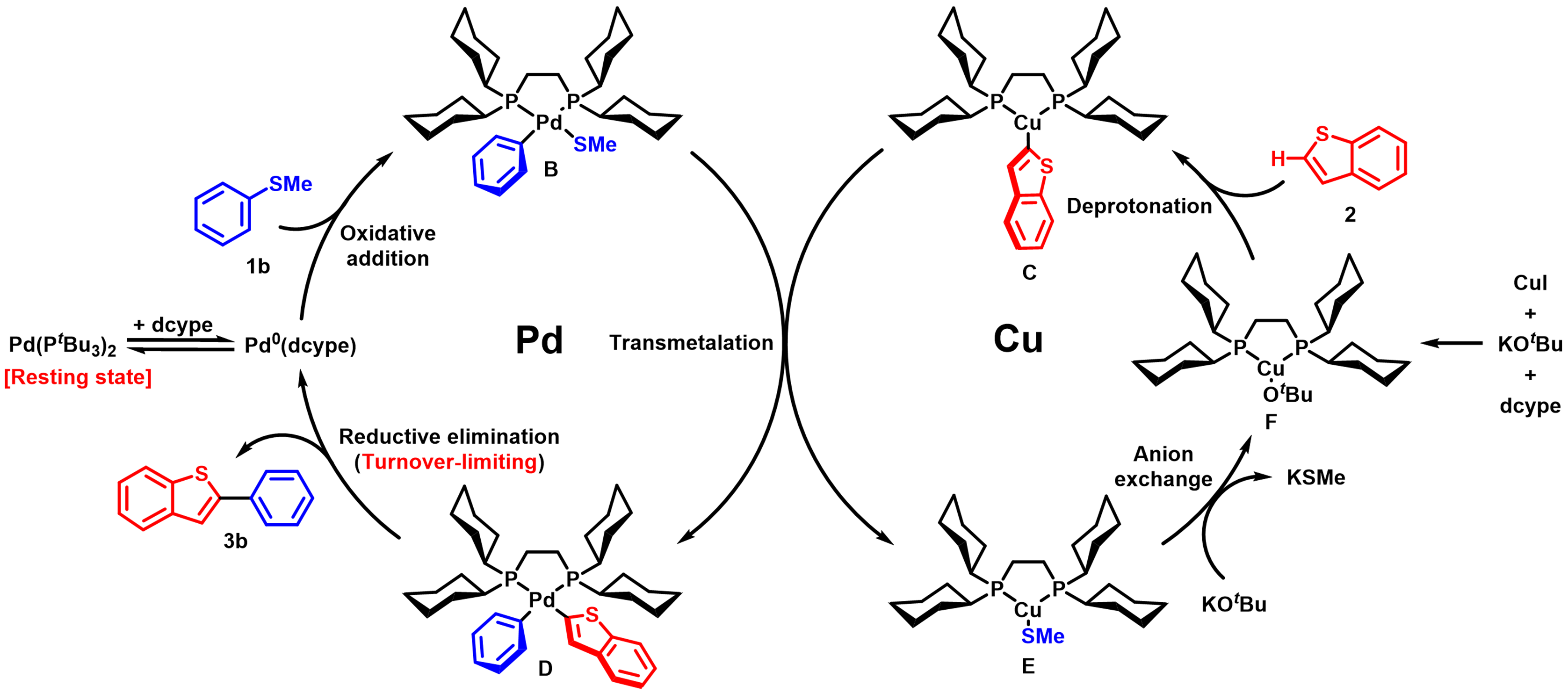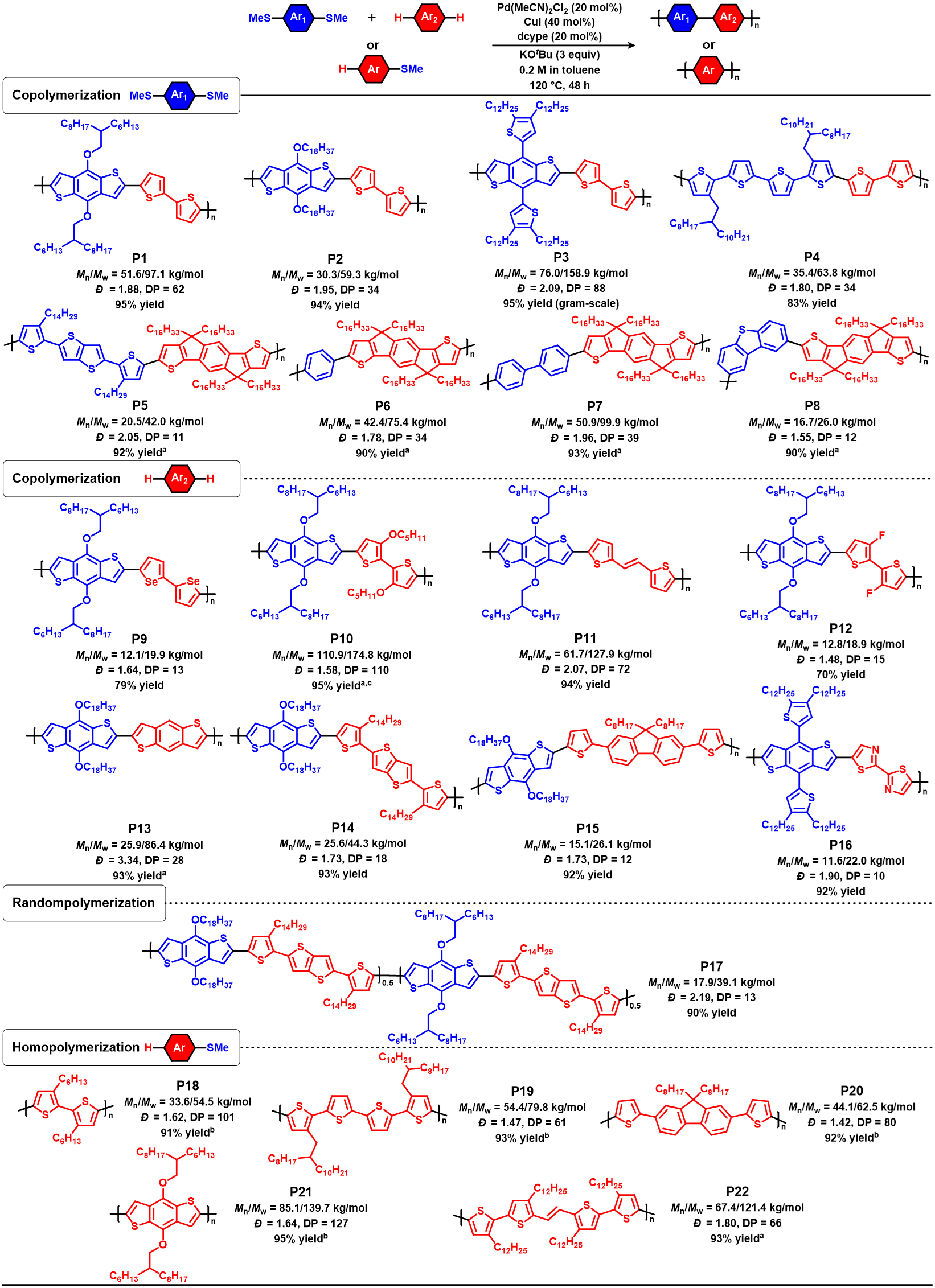Conjugated polymers are a class of polymer materials with delocalized π - π conjugated skeletons, which have advantages such as chemical structure modification, tunable energy bands and spectra, and solution-processing. They have shown broad application prospects such as energy, life, and environment. However, the typical cross-coupling polycondensations, such as Suzuki, Stille, generally require the pre-functionalization of monomers, which not only increases the synthetic steps but also causes significant metal residues, limiting the development and application of conjugated polymers. In comparison, direct arylation polymerization (DArP) has the advantages of atom economy and environmental protection, and has developed rapidly in recent years. However, the poor selectivity of C-H bond activation, the homopolymerization side reaction of halides, and the poor universality of substrates have affected the wide use of this method. Therefore, developing green, and efficient polymerization methods is of great significance for improving the quality of conjugated polymers and promoting the industrialization of organic electronic technology.
In recent years, our group has been committed to developing new synthetic methods based on C-S bond activation (Nat. Chem. 2017, 9, 188-193; Inorg. Chem. 2018, 57, 9266-9273; Angew. Chem. Int. Ed. 2019, 58, 5044-5048; Chem. Eur. J. 2022, 28, e202200869; Nat. Commun. 2022, 13:144.). The latest research has found that using aryl sulfide as a substrate to replace aryl halides can prepare alternating conjugated polymers with more regular structures and better charge transfer properties (Nat. Commun. 2022, 13:144.), which is named CASP (carbon and sulfur bond activation based polymerization). On the basis of the above research results, the Hui Huang and Qinqin Shi team developed a new DArP method using aromatic sulfide as an electrophilic reagent. This method significantly improved the reaction activity through Pd/Cu co-catalysis, achieving an efficient polymerization including homopolymerization, alternating copolymerization, and random copolymerization, and synthesizing conjugated polymers with advantages such as high molecular weight and structural regularity.

Firstly, the author optimized the reaction conditions with heterocyclic/phenyl sulfide and benzothiophene as the reaction substrates, and determined that the catalytic metering Cu(I) reagent can significantly enhance the catalytic activity of small molecule reactions. Then the author first captured the Pd(II) Oxidative addition intermediate, and based on this, confirmed the reaction mechanism through control, deuterium experiment, reaction kinetics and other methods, and finally verified the rationality of the reaction mechanism through DFT theoretical calculation.

On the basis of small molecule optimization conditions, the author further optimized the polymerization reaction and expanded the substrate range using aryl disulfides and aromatic heterocycles as substrates. The results show that high catalytic stoichiometry Pd/Cu co-catalysts can significantly improve the polymerization effect, and the prepared polymers can have an average molecular weight of up to 110.9 kDa. Taking P22 polymer as an example, the author found that the polymers synthesized by this method have a higher number average molecular weight, less defect density of states, and higher hole mobility compared to traditional Stille synthesized polymers.

In summary, this work developed the first efficient DArP method based on C-S bond activation (CAS-DArP), and confirmed mechanism experiments and theoretical calculations that Pd/Cu co-catalysis can significantly improve reaction activity, providing a new synthesis strategy for synthesizing low-cost and high-performance polymer semiconductor materials.
References:
An Efficient Direct Arylation Polycondensation via C-S Bond Cleavage
Meng Zhang, Bei-Bei Zhang, Qijie Lin, Ziling Jiang, Jianqi Zhang, Yawen Li, Shurui Pei, Xiao Han, Haigen Xiong, Xinyu Liang, Yuze Lin, Zhixiang Wei, Fengjiao Zhang, Xin Zhang, Zhi-Xiang Wang, Qinqin Shi, and Hui Huang
Angewandte Chemie International Edition
DOI: 10.1002/anie.202306307


